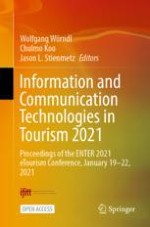1 Introduction
2 Area of Study
3 Data and Methodology
Ranking | Country | Count | % | Ranking | Country | Count | % |
|---|---|---|---|---|---|---|---|
1 | United States | 14,473 | 53.3 | 6 | France | 826 | 3.0 |
2 | United Kingdom | 2,175 | 8.0 | 7 | Australia | 799 | 2.9 |
3 | Italy | 1,246 | 4.6 | 8 | Germany | 581 | 2.1 |
4 | Canada | 1,241 | 4.6 | 9 | Japan | 495 | 1.8 |
5 | Brazil | 997 | 3.7 | 10 | Spain | 399 | 1.5 |
Total | All countries | 27,177 | 100 | ||||
4 Results
Ranking | Country | Mean | SD | Ranking | Country | Mean | SD |
|---|---|---|---|---|---|---|---|
1 | Brazil | 0.73 | 0.36 | 6 | UK | 0.66 | 0.39 |
2 | US | 0.72 | 0.32 | 7 | Italy | 0.61 | 0.41 |
3 | Australia | 0.71 | 0.34 | 8 | Spain | 0.61 | 0.36 |
4 | Canada | 0.69 | 0.38 | 9 | France | 0.59 | 0.39 |
5 | Germany | 0.67 | 0.34 | 10 | Japan | 0.52 | 0.41 |
Average | All countries | 0.69 | |||||
